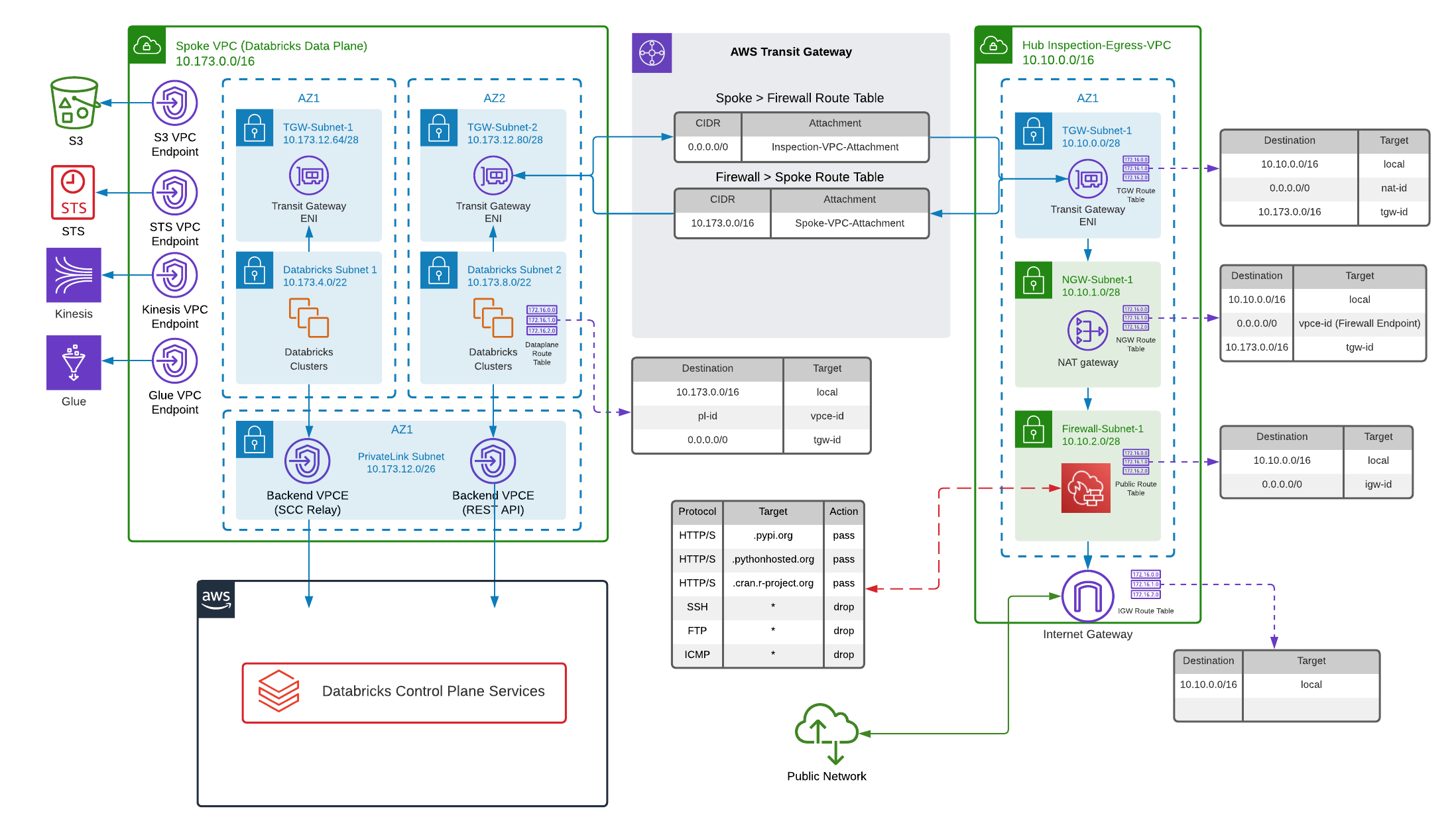Provisioning AWS Databricks E2 workspace with a Hub & Spoke firewall for data exfiltration protection
This template provides an example deployment of AWS Databricks E2 workspace with a Hub & Spoke firewall for data exfiltration protection. Details are described in Data Exfiltration Protection With Databricks on AWS.
Note
The following Terraform guide provides step-by-step instructions for this deployment.
Resources to be created:
- VPC
- AWS Transit Gateway
- AWS Network Firewall
- S3 Root bucket
- Cross-account IAM role
- Databricks E2 workspace
- (Optional) Private link between clusters on the data plane and core services on the control plane
Note that enabling Private link on AWS requires Databricks "Enterprise" tier. On AWS the tier is configured at the Databricks account level. If your Databricks account is using lower tier disable the private link in the variables (see below).
Note
You can customize this module by adding, deleting or updating the AWS resources to adapt the module to your requirements. A deployment example using this module can be found in examples/aws-exfiltration-protection If you are using AWS Firewall to block most traffic but allow the URLs that Databricks needs to connect to, please update the configuration based on your region. You can get the configuration details for your region from Firewall Appliance document.
- Reference this module using one of the different module source types
- Add a
variables.tfwith the same content in variables.tf - Add a
terraform.tfvarsfile and provide values to each defined variable - Configure the following environment variables:
- TF_VAR_databricks_account_id, set to the value of the ID of your Databricks account. You can find this value in the corner of your Databricks account console.
- Add a
output.tffile. - (Optional) Configure your remote backend
- Run
terraform initto initialize terraform and get provider ready. - Run
terraform applyto create the resources.
